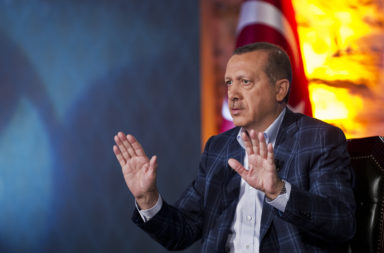A long-awaited military campaign is underway to retake the key northern Syrian city of Raqqa from the so-called Islamic State (IS). With the group apparently losing territory and its de facto central hub now under heavy attack, there arises an obvious question: is this the end of IS?
Alas, the answer has to be a resounding “no”. There is increasing evidence that IS is transforming itself into a long-term insurgency in Iraq and Syria, but also developing into a movement with worldwide reach.
The seriousness of the problem can be gauged by the scale of the assault on Raqqa, which is underway even as IS stubbornly clings on to the Iraqi city of Mosul. The US-led military coalition, with all its resources, is now playing a much more substantial role in both battles.
The Raqqa operation’s frontline paramilitaries are organised by the Syrian Defence Forces (SDF) and drawn from Kurdish militias of the People’s Protection Units (YPG) together with a range of Syrian non-Kurdish militias, both strongly supported by the US. The level of support has increased substantially in recent months; Reuters has reported that as the opposition forces move slowly towards Raqqa, they are having to closely coordinate with the US to avoid “friendly fire” casualties.
Their tactics focus on the careful movement of forces, often on foot, towards the inner city areas IS has fortified and protected, with coalition air power and artillery fire clearing the way. The anti-IS forces are being met with sniper and mortar fire, even though the city’s outer districts are only lightly defended.
The extent of the coalition forces’ involvement is only now becoming clear. The West is now directly and closely involved in the war on the ground as well as in the air; many of these troops might be special forces who prefer to keep a low profile, but nonetheless, the Middle East is once again becoming host to thousands of Western “boots on the ground”.
On the march
US forces are deeply involved in the battle for Mosul. As Military Times lately reported:
As the battle to liberate Mosul in Iraq moved deeper into the city, Navy SEALs began wearing black fatigues to blend in with Iraqi counter-terror operatives going street by street, and house by house, to flush IS fighters into the open.
The same source reports that US special forces are directly engaged alongside the SDF in Raqqa. Part of the reason for this, as well as the extensive use of air power and artillery support, is that IS is proving tenacious in the extreme when defending its main bases.
The under-reported battle for Mosul remains the prime example. In March 2017, when the operation had already lasted more than twice as long as expected, I questioned what might come next: “Is the looming loss of the Grand Mosque the beginning of the end for IS – or is it just another turning point in a long drawn-out war?” Three months later, the “end” is nowhere in sight.
IS forces are still laagered in the old city, and even control three outer districts. During the fighting, they have crippled the Iraqi Army’s Counter Terror Service, or Golden Division – the very force the Baghdad government will depend on to control an expected post-Mosul insurgency.
Sometime later this year, IS will most likely lose Raqqa and Mosul, but it will already have moved towards long-term guerrilla campaigns in both countries. And even more significantly, it will have rapidly extended its global reach.
New fronts
All of 2016’s six US combat deaths in Afghanistan were sustained while fighting the local IS affiliate, the Islamic State in Khorasan, not the Taliban. The group is also believed to be responsible for some of the high-profile attacks in Kabul, adding to an overall deterioration in the country’s security situation.
But the problem goes even further. In the Philippines, president Rodrigo Durtete was so fixated on his war against drugs that he ignored the rise of the IS-linked Maute Group near the southern city of Maerawi. The group subsequently took over the city, igniting an intense conflict that has lasted three weeks. Because of the extent of the problem, US surveillance aircraft, drones and special forces are now supporting the Philippine army as it tries to take back control.
This rise in IS influence is part of a wider concern at the growth of paramilitary movements across South-east Asia, not least in Indonesia and Thailand.
Meanwhile, IS is also increasing its attempts to encourage, incite and even help organise attacks on the “far enemy” states, especially in western Europe, as well as “near enemy” states such as Iran. IS recently made a show of claiming responsibility for deadly attacks in Manchester, London and Iran – part of a strategy to signal that its much-vaunted “caliphate” in Iraq and Syria is not its only goal.




